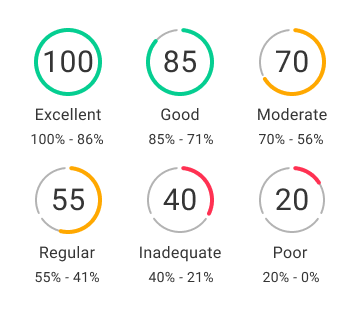Products
Mold is one of the main microbiological risks in indoor environments. Its presence not only affects the appearance of walls and ceilings, but also compromises occupant health and the durability of building materials. In this context, having an intelligent indoor mold monitor is key to anticipating and preventing its proliferation.
With inBiot's MICA solution, it is now possible to monitor the risk of mold growth in real time thanks to the Mold Growth Resistance Indicator, based on accumulated temperature and humidity conditions.
Mold is a group of microscopic filamentous fungi species, belonging to the Fungi Kingdom, which grow in colonies when environmental conditions; mainly humidity and temperature; are favorable for their proliferation. Mold spores are naturally present in the air and, when deposited on damp surfaces, can begin to grow.
Exposure to mold spores can cause:
• Respiratory and allergic issues.
• Skin irritations.
• Headaches or neurological symptoms.
Vulnerable groups include children, asthmatics, allergy sufferers and older adults.
Mold formation also leads to:
• Structural damage to building materials.
• Loss of thermal insulation.
• Failures in electrical or HVAC systems.
• Increased risk of corrosion.
Mold growth requires three main factors: moisture, suitable temperature and prolonged exposure.
• Capillarity: moisture rising from the ground through poorly sealed walls.
• Leaks: water entering through structural defects.
• Condensation: due to thermal bridges or poor ventilation.
• High ambient humidity: caused by daily activities in poorly ventilated spaces.
To control moisture, buildings need both structural interventions and continuous monitoring of temperature and humidity using smart systems like MICA.
The Mold Growth Resistance Indicator anticipates mold risk by integrating both current conditions and the environmental history of the space. This cumulative approach is essential, as mold does not appear due to a one-off condition, but rather from prolonged exposure to critical humidity.
It is based on the Hukka and Viitanen model and ANSI/ASHRAE Standard 160, and rates indoor mold resistance on a scale from 0 to 100.
The indicator includes 6 resistance levels

Each hour, the system:
• Calculates the critical humidity threshold for the current temperature.
• If the humidity exceeds this threshold, the indicator decreases.
• If humidity stays below the threshold, the indicator improves.
This real-time evaluation creates a risk curve, especially useful for building professionals and maintenance managers.
Because the indicator uses a cumulative approach, it requires an initial phase of approximately 3 hours to collect sufficient data to provide a reliable value. During this initialization period, the MICA records temperature and humidity conditions, creating a baseline that reflects the environmental behavior of the space.
Once this phase is complete, the MICA has the minimum information necessary to begin displaying values representative of the risk of mold growth. From that point on, the device will accumulate historical temperature and humidity data, and the indicator will provide increasingly stable, accurate, and representative values for the conditions of the space.
This indicator is fully integrated into inBiot’s MICA devices, which continuously record temperature and relative humidity to automatically calculate the resistance index.
It considers three key factors: temperature, humidity, and exposure time, enabling a reliable assessment of the real risk of mold on surfaces.
The indicator does not show only momentary conditions; it provides a dynamic and continuous view of the risk based on accumulated data. This time-based perspective helps:
• Early detection of high-risk areas.
• Adjustments in ventilation or dehumidification.
• Verification of corrective measures.
This makes the mold indicator a key resource for maintenance professionals and building managers aiming to ensure healthier, more efficient, and long-lasting spaces.
Viitanen,H., & Ojanen, T. (2007). Improved model to predict mould growth in building materials. In Proceedings of the 10th Thermal Performance of the Exterior Envelopes of Whole Buildings Conference ASHRAE.